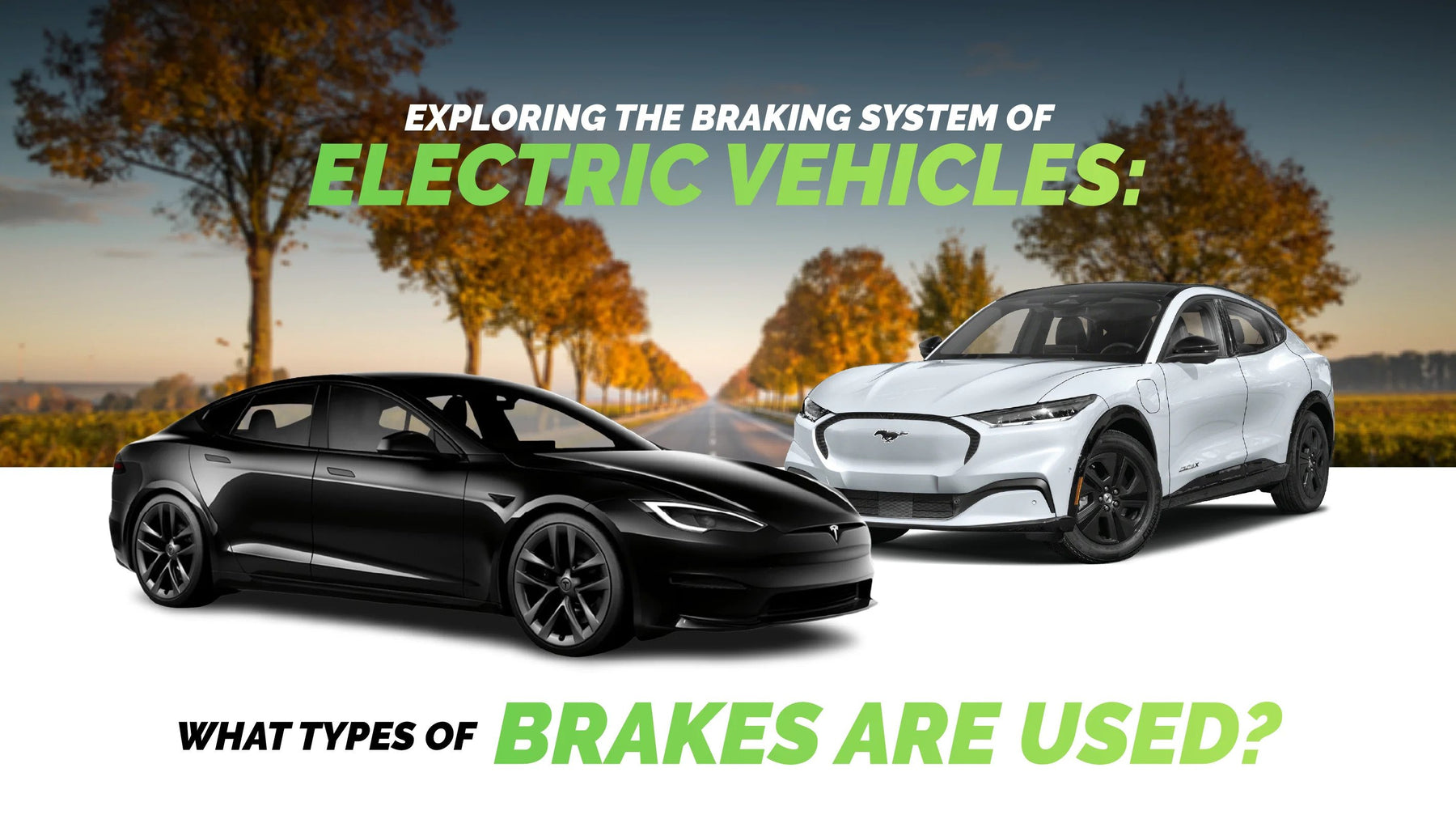
Exploring the Braking Systems of Electric Vehicles: What Types of Brakes are Used?

Electric vehicles (EVs) are becoming increasingly popular due to their eco-friendliness and the cost savings associated with using electricity instead of gasoline. However, understanding the braking systems of EVs is crucial for their safe and efficient operation.
In this article, we will explore the different types of brakes used in EVs, including traditional friction brakes and newer regenerative and electrohydraulic brakes.
Traditional Brakes vs. EV Brakes
Traditional brake systems work by using a hydraulic system to transfer force from the brake pedal to the brake pads, which press against the rotors to slow or stop the vehicle. EVs, on the other hand, have different brake systems that take advantage of their unique features.
While some EVs still use traditional friction brakes, many are now equipped with regenerative and electrohydraulic braking systems.
Regenerative Braking
Regenerative braking is a type of braking system that recovers kinetic energy during braking and converts it into electrical energy to recharge the vehicle's battery. This process is achieved by reversing the direction of the electric motor, effectively turning it into a generator.
The electrical energy is then stored in the battery for later use. Regenerative braking has several advantages over traditional friction brakes, including increased energy efficiency and reduced wear on brake pads. However, regenerative braking may not be as effective at stopping the vehicle at high speeds, so traditional friction brakes are often used in combination with regenerative braking.
Friction Brakes
Friction brakes are the most common type of brakes used in vehicles, including EVs. They work by using friction to slow or stop the vehicle. When the brake pedal is pressed, a hydraulic system applies pressure to the brake pads, which press against the rotors to create friction and slow down the vehicle.
Friction brakes can be made of various materials, including ceramic, metallic, or organic compounds. Ceramic brake pads are known for their durability and low noise, while metallic brake pads are better at dissipating heat and are more suitable for high-performance driving.
Electrohydraulic Brakes
Electrohydraulic brakes are a newer type of braking system that uses a combination of hydraulic and electric systems. These brakes are typically used in hybrid or electric vehicles that have complex brake systems due to the use of regenerative braking.
This type of brakes work by using an electric motor to control the hydraulic system that applies pressure to the brake pads. This type of brake system is more complex than traditional friction brakes, but it can provide smoother and more consistent braking performance.
Comparison of Braking Systems in EVs
The choice of braking system for an EV depends on several factors, including the vehicle's weight, driving conditions, and energy efficiency. Regenerative braking is becoming more common in EVs due to its energy-saving capabilities, but it may not be suitable for all driving conditions.
Friction brakes are still used in many EVs, especially in heavier or high-performance vehicles. Electrohydraulic brakes offer a balance between regenerative and friction brakes and are often used in hybrid or plug-in hybrid vehicles.
FAQ
Why do Tesla brake pads last so long?
Tesla's brake pads last longer than traditional brake pads due to the use of regenerative braking, which reduces wear and tear on the brake pads. In addition, Tesla uses high-quality materials and designs its brake systems to be more durable than traditional brake systems.
Why do hybrid brakes last longer?
Hybrid brakes last longer due to the use of regenerative braking, which reduces the need for traditional friction brakes. In addition, hybrid vehicles typically have lighter weight and more efficient brake systems, which also contribute to longer brake pad life.
Do electric cars have normal brakes?
Yes, electric cars can have traditional friction brakes, although regenerative braking is becoming more common due to its energy-saving capabilities.
Conclusion: Designing the Ideal Braking System for EVs
In conclusion, the ideal braking system for an EV depends on the specific needs and use case of the vehicle. Automakers must carefully evaluate the pros and cons of each type of brake and determine which is most suitable for their particular EV.
As the demand for EVs continues to grow, it is likely that we will see further innovation and development in braking systems specifically designed for these vehicles. Through continued research and development, we can strive towards creating the most efficient and effective braking systems for the future of electric transportation.
Amplify your vehicle's stopping power with NRS Brakes' top-notch galvanized brake pads, equipped with the latest anti-rust and anti-corrosion technology. These pads offer exceptional protection against the elements and ensure maximum braking capacity for your ride as well as being the longest lasting brake pad in the world. Don't leave your vehicle's safety to chance. Get in touch with NRS Brakes today for a hassle-free installation experience. Contact us at info@nrsbrakes.com or give us a call at +1 877-677-2725 to secure your ultimate braking solution. You deserve nothing but the best.
